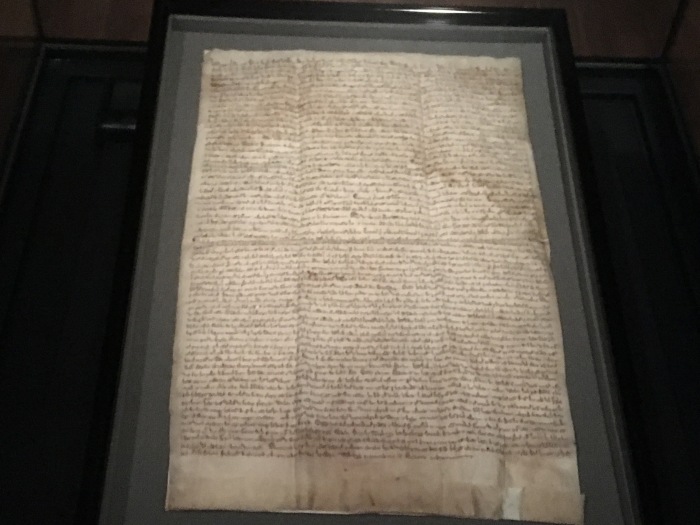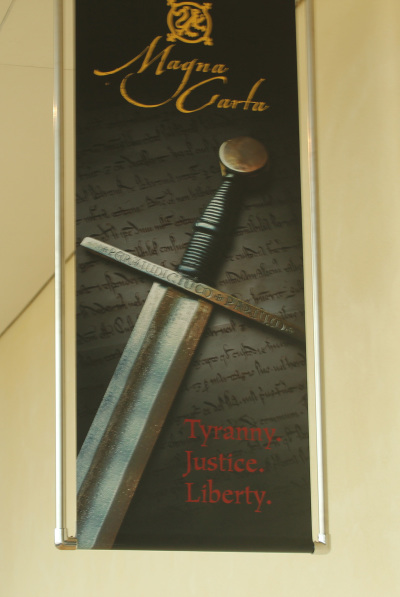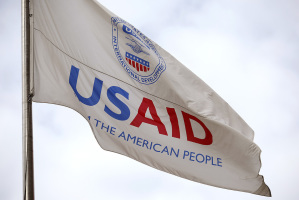Museum of the Bible unveils Magna Carta exhibit, highlights influence on America’s founding documents

WASHINGTON — The Museum of the Bible is set to unveil a Magna Carta exhibit Friday, which will examine “the role of the church and the Bible” in the formulation of the centuries-old document.
On June 22, the Museum of the Bible announced that it would be debuting a major new exhibit called “Magna Carta: Tyranny. Justice. Liberty.” The exhibit, a partnership between the Museum of the Bible and Hawkwood International, will be on display on the museum's fifth floor from July 2 to Jan. 2, 2022.
As noted in the Museum of the Bible's statement announcing the exhibit, “The Magna Carta is widely considered a major inspiration for the Declaration of Independence, the United States Constitution and the Bill of Rights, the United Nations’ Universal Declaration of Human Rights and the British Human Rights Act.”
The exhibit will feature an original 1217 Magna Carta, one of only four in existence, as well as the King’s Writ, an initial agreement between England’s most powerful barons and King John to restore their “ancient liberties.”

The exhibit illustrates how “The king and rebel barons gathered at the ancient site of Runnymede,” where a “treaty in the form of a charter was crafted over several days in June 1215.” However, John, described as a “tyrant” in the exhibit, quickly broke the promises in the King’s Writ and the Magna Carta did not come to fruition until 1217, after King John died.
Prior to the exhibit’s opening, a press preview was held for the media. At the event, Jeffrey Kloha, chief curational officer of the Museum of the Bible, elaborated on how the Museum of the Bible’s Magna Carta exhibit advances its mission as a “global, innovative, educational institution whose purpose is to invite all people to engage in the transformative power of the Bible.”
Kloha explained that the exhibit is designed to “highlight the role of the church and the Bible in the background of Magna Carta,” specifically noting that the first clause features a “religious freedom element to the Magna Carta” that “actually guarantees the liberty of the English Church.”
In a statement issued last week, Kloha predicted that “In ‘Magna Carta: Tyranny. Justice. Liberty,’ visitors will encounter these early, foundational documents in an interactive and engaging exhibit.” Additionally, he said, “They will leave with a greater understanding of the relevance of the Magna Carta, the enduring importance of the rights that developed from it, and the central role played by the church and the Christian faith in its creation and longevity.”

Luke Purcer, the CEO of Hawkwood International, recalled how he first conceived the idea of a Magna Carta exhibit after putting together the world’s first music performance at Stonehenge and asking “what do we do next” immediately thereafter.
Citing a desire to create an “engaging, interesting experience around something that is culturally and historically significant,” Purcer said he thought of the Magna Carta and worked to put together the exhibit in collaboration with the Hereford Cathedral, where the 1217 Magna Carta and the King’s Writ previously resided, from there.
Purcer stressed that “there is no such thing as ‘the Magna Carta,’” and that between 20 and 25 “Magna Cartas” have been issued over time, beginning with the 1217 Magna Carta. He asserted that in 1217, a new document was ‘issued alongside a second charter, which was a little bit smaller than the first one, so the first one was called the big charter, ‘magna charter.’” The other document became known as the Charter of the Forest.
As part of its effort to explore “the medieval world, the context of the creation of the Magna Carta and the personalities involved,” the exhibition includes additional historic documents from a period of over 500 years. One such artifact is the Codex Valmadonna, a liturgical Torah written in 1189, which is “the only surviving dated Hebrew text from England prior to King Edward I’s expulsion of the Jews in 1290.”
The exhibit also includes an illuminated New Testament dating back to 1215 and a Magna Carta issued by King Edward I in 1300 accompanied by its corresponding Charter of the Forest. The existence of the 1300 Magna Carta was unknown until five years ago, and it was also viewed by Thomas Paine, an influential figure in the American Revolution, while he still lived in England.
A portion of the exhibit titled “The Road to Liberty” highlights the 1217 Magna Carta’s influence on the founding documents of the United States: “As the Constitution was drafted, core concepts from Magna Carta were considered essential components. The rule of law, due process and habeas corpus represent important continuities between English and American legal traditions. Magna Carta’s legacy is reflected most clearly in the Bill of Rights, the first 10 amendments to the Constitution ratified in 1791.”
In addition to featuring pictures of the U.S. Constitution and the Bill of Rights obtained from the National Archives, the exhibit contains hard copies of the Journal of the Proceedings of the Continental Congress from 1774, shortly before the American Revolution, as well as Thomas Paine’s pamphlet “Common Sense,” which rebuked the “tyranny of the English monarchy” and is credited with pushing colonists to openly call for independence.
Additionally, the exhibit highlighted the role of Stephen Langton, appointed by Pope Innocent III to serve as archbishop of Canterbury, in crafting the Magna Carta. While Innocent appointed Langton to that post in 1207, King John refused to recognize his legitimacy.
As noted in the exhibit, “Langton was a leading figure in the opposition to King John that eventually led to Magna Carta, and he may have been responsible for writing some [of] the charter’s clauses.” Langton “argued that God had not intended for the world to be ruled by kings, who could be tempted to rule oppressively and outside the law” and frequently criticized “the avarice … of modern kings who collect treasure not in order that they may sustain necessity but to satiate their cupidity.”
Ryan Foley is a reporter for The Christian Post. He can be reached at: ryan.foley@christianpost.com





























